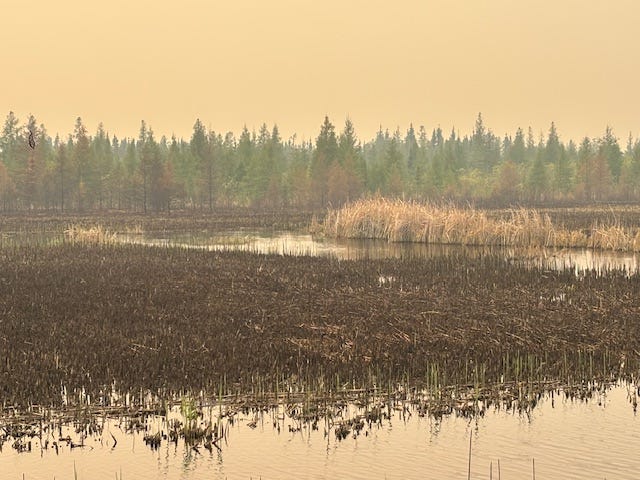Haiku Pause Issue 2
Our special issue, "We Are Here: Haiku and Our Climate Experience," is live!
Dear readers, Issue 2 of Haiku Pause is now live! We hope you enjoy it. It can be viewed or downloaded as a FlipBook, or downloaded as a PDF, at the links below.
Thank you for bearing with us through our lengthy editorial process this time. In addition to our editors being affected by both climate and health challenges, we have received an overwhelming number of submissions and needed extra time to organize them into a collection.
The variety of the submissions we received made us realize two things: first, the degree to which the writing process is deeply affected by the dislocation of the seasons and the prevalence of extreme climate events. And second, the writers who sent us poems are based in all corners of the globe, but regardless of their location there’s a perceived sense of awareness of the cataclysms experienced as having an animate quality:
Barbara Anna Gaiardoni from Verona, Italy is speaking directly to the wind, and in return receives instructions for how to proceed with her day, unbalanced by the alarming shift in seasons. Caroline LeBlanc, writing in New Mexico, is guided in a dream to create an artwork personifying the message sent from our rapidly changing planet, which offers “rivers of consolation.” Bonnie Myotai Treace, to whom we are deeply grateful for serving as guest editor, writes from the banks of the Swannanoa River in North Carolina. There, at ground zero of Hurricane Helene, she recognizes the river’s reshaping of the land since before human history. As the storm’s waters leave a residue of mud for miles in every direction, the thief of “light” reveals the darkness of unspeakable grief, and “still she can’t exhale.” It is as if Nature itself in these haiku and haibun is shocked by the changes she is undergoing, the impossibility of making sense of what is happening to her. Carrie Lynn Hatland, who lost her family home to a wildfire in her native Manitoba, goes back to the disaster site to observe tiny flowers beginning to bloom in the charred forest, which she perceives as “beacons for return.” The effect of these blooms being seen as beacons for return and regeneration, another prevalent theme in this issue, shows us that the mechanism of self-repair in the Earth’s ecosystems is, as of now, unbroken.
We were moved by the amazing array of photography and artwork received for this issue, and appreciate how their visual presentation honors the hard and poignant realities of climate change. Perhaps most deeply, we came through the process of bringing together this collection with a keen appreciation that haiku as a form not only still functions as an instrument of connection, of intimacy, with Nature, but that it enables that critical connection even as we face the extremes Earth’s climate system is undergoing. The poet hears with a tenderness the ordinary being finds hard in the midst of global heartbreak. Still, the Earth waits for us to speak for her, to know ourselves as not separate from her, no matter the condition, crisis, or call.
– The Editors
Download Haiku Pause Issue 2 as a PDF here:
https://drive.google.com/file/d/1eC1wbwhaFbDqYnV-D2-L7h2iVHfpXj9A/view?usp=sharing
View and Download Haiku Pause Issue 2 as a FlipBook here:
https://online.fliphtml5.com/haikupause/yfzg/
Photo by Carrie Lynn Hatland



A beautiful collection! Thank you for your skillful work that weaves it into one!♥️🙏🏼♥️
My mom is published in this. How do we download the flip book? I can't find a download button.